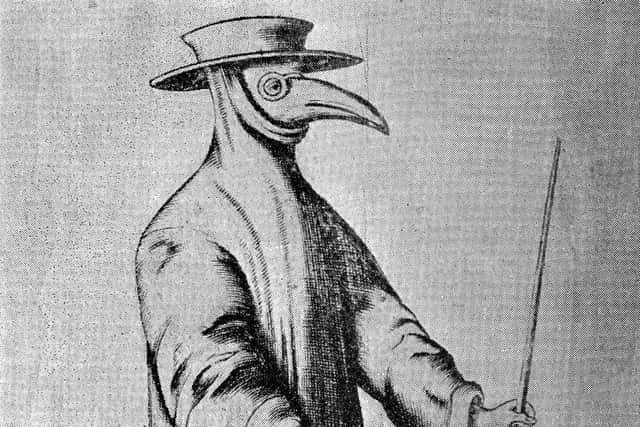Five times Edinburgh residents went into lockdown throughout history
and live on Freeview channel 276
As the Capital continues its first week of lockdown, we take a look at a handful of other occasions throughout history when city residents were faced with weeks and months spent behind closed doors.
The strict nationwide social restrictions announced by the Prime Minister on Sunday are unprecedented in the modern age, but there was a time when state-prescribed quarantines and periods of urban isolation were far more common.
Advertisement
Hide AdAdvertisement
Hide AdFrom prolonged sieges and riots to full on invasions and outbreaks of pestilence, Edinburgh has been forced to bunker down on countless occasions over the centuries.


The ‘Rough Wooing’ of 1544
Edinburgh was all but razed to the ground in late spring 1544 when an invading English army, under the command of the Earl of Hertford, carried out instructions to burn everything they could within the city walls, including Holyrood Palace and its abbey, rather than adopt siege tactics.
During the attacks, desperate citizens made for the sanctuary of the Castle and hid in the basements and cellars of the Old Town.
In the aftermath, English ships were filled to the brim with all manner of loot at Leith while the army headed back across land towards the border burning and pillaging as they went.
The plague outbreak of 1585
Advertisement
Hide AdAdvertisement
Hide AdThe Black Death reared its ugly head frequently in 16th and 17th century Edinburgh.
When an outbreak of plague was reported at Wemyss, Fife, in July 1584, Edinburgh’s town council turned to respected surgeon James Henrysoun on how to best combat it.
One of the preventative methods carried out was to punish those who failed to disclose news of their infection. Many men and women would be hanged and drowned respectively.
The first case in Edinburgh emerged the following April in a house at Fleshmarket Close. The entire property was boarded up and the inhabitants isolated.
Advertisement
Hide AdAdvertisement
Hide AdAs the outbreak began to spread, its impact could be seen around the city. In November 1585, on a walk from one end of town to the other, the diarist James Meville remarked that “we saw not three persons”.
The epidemic would last five years. Henrysoun, who would lose his wife to the disease, eventually opened a camp for sufferers at Purvis Acre, north of Blackford Hill.
An even greater outbreak of bubonic plague would arrive in the Capital less than a century later, in 1645, leaving tens of thousands dead.
The Cromwell Invasion of 1650
Edinburghers were in for a rough few months of it when the militaristic might of Oliver Cromwell and his New Model Army captured the Castle in December 1650.
Advertisement
Hide AdAdvertisement
Hide AdCromwell and his soldiers imposed strict curfews and tight religious restrictions on citizens. Tron records show a decline in pew rents, with the result being a dramatic drop in kirk attendances during the occupation.
Several months would pass before Cromwell and his lot retreated from the Capital. They would, however, leave their mark. Soldiers quartered at Holyrood Palace managed to set fire to the building, almost completely destroying it in the process.
The Porteous Riots of 1736
In April of 1736, the captain of the City Guard took on the Edinburgh mob, and the Edinburgh mob won.
Riots broke out during the execution of a local smuggler, resulting in nine people being shot dead at the order of Captain Porteous of the City Guard.
Advertisement
Hide AdAdvertisement
Hide AdFor this, Porteous was sentenced to death but later granted a royal pardon. The mob didn’t take kindly to this decision, however, seized Porteous and hanged him in the street.
During this period of civic unrest, many residents opted to remain behind locked doors until the situation eased.
The Jacobite occupation of 1745
With next to no resistance, the Jacobites, led by Bonnie Prince Charlie, marched into the heart of Edinburgh on 17 September 1745.
Four days later, a triumphant Charles returned victorious, his army having won decisively at the Battle of Prestonpans.
Advertisement
Hide AdAdvertisement
Hide AdWhile many supported the Young Pretender, others were terrified that all hell was about to descend on Edinburgh as a result of the military occupation. Residents are said to have holed themselves up behind closed doors until the Jacobites departed more than a month later.
Comment Guidelines
National World encourages reader discussion on our stories. User feedback, insights and back-and-forth exchanges add a rich layer of context to reporting. Please review our Community Guidelines before commenting.